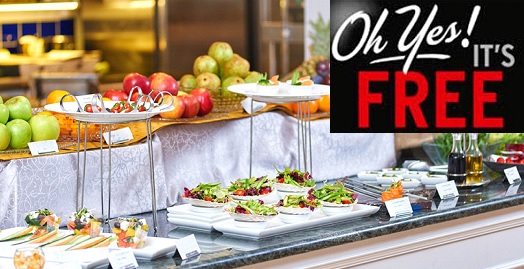 Food addiction recovery takes commitment. So does bingeing. This commitment can be in the form of emotional, physical, spiritual or financial resources. It’s estimated that a food addict spends about $60 per binge. While some food addicts binge three or four times a week, most of the food addicts who come to us are bingeing three or four times a day. At three binges per day, that’s a cost of $180 for one day, $1,260 per week, $5,400 per month.
Food addiction recovery takes commitment. So does bingeing. This commitment can be in the form of emotional, physical, spiritual or financial resources. It’s estimated that a food addict spends about $60 per binge. While some food addicts binge three or four times a week, most of the food addicts who come to us are bingeing three or four times a day. At three binges per day, that’s a cost of $180 for one day, $1,260 per week, $5,400 per month.
Even at one binge per day, the monthly total is $1,800. This is the reality of food addiction. Though most food addicts don’t go into a grocery store and spend $450 a week on food at one time, many make several trips to fast-food restaurants, convenience stores, cafeterias, or coffee shops and spend significant amounts of money there.
By spreading out their spending at various stores, food addicts are better able to deny the actual amount of money they spend each month on food. This allows them to continue spending large amounts of money and eating a high volume of food without realizing the total cost of literally feeding their addiction.
It doesn’t have to be this way. Spending money on food addiction recovery is a much better “deal” than purchasing food to binge on. Whether it’s putting a few dollars in the basket at a Twelve-Step meeting, buying a book to help with recovery, spending money on healthy foods, or registering for a food addiction program, the benefits are longer-lasting and priceless.
Money spent on a binge goes up in flames quickly. A binge is over in a matter of minutes while food addiction recovery can last a lifetime. More than that, food addiction recovery can create a life that is beyond a bingeing food addict’s wildest dreams.
The choice on whether or not to put your money where your recovery is belongs to you.

 The first of the year. The beginning of the month. A Monday. The day after a holiday. All of these were markers that I used to begin a weight loss program. By the next day or two, I usually “cheated” on my diet which gave me an excuse to binge even more than before until the next “Diet Day” came around.
The first of the year. The beginning of the month. A Monday. The day after a holiday. All of these were markers that I used to begin a weight loss program. By the next day or two, I usually “cheated” on my diet which gave me an excuse to binge even more than before until the next “Diet Day” came around. Today, I can honestly say I am happy, joyous, grateful, and physically healthy. I truly never believed this could ever happen to me; as I said, I was resigned to being fat and miserable the rest of my life. But that isn’t the case today. I found a solution, and now I work with people every day to help lift them out of the trenches of food obsession and addiction.
Today, I can honestly say I am happy, joyous, grateful, and physically healthy. I truly never believed this could ever happen to me; as I said, I was resigned to being fat and miserable the rest of my life. But that isn’t the case today. I found a solution, and now I work with people every day to help lift them out of the trenches of food obsession and addiction. At this time of the year, many people have the chance to eat “free” food. Parties, work-related events, school-sponsored programs or even a trip to a bank that puts out dishes of candy, can all be opportunities to eat food without paying for it.
At this time of the year, many people have the chance to eat “free” food. Parties, work-related events, school-sponsored programs or even a trip to a bank that puts out dishes of candy, can all be opportunities to eat food without paying for it. For many food addicts, the month of December can be quite a challenge. Not only is it filled with several holidays but it also marks the end of another year. For those still deep in their addiction, this can be a painful reminder of promises made and broken about losing weight or developing healthy eating habits.
For many food addicts, the month of December can be quite a challenge. Not only is it filled with several holidays but it also marks the end of another year. For those still deep in their addiction, this can be a painful reminder of promises made and broken about losing weight or developing healthy eating habits.
 When I weighed over 300 pounds, I thought everyone in the world was looking at me, watching to see what I was doing, who I was with, and most of all what I was eating. I truly believed that everyone was talking about me behind my back. Many times, I was too overwhelmed to even leave the house because I couldn’t handle all of the negative things I was sure people were saying about me.
When I weighed over 300 pounds, I thought everyone in the world was looking at me, watching to see what I was doing, who I was with, and most of all what I was eating. I truly believed that everyone was talking about me behind my back. Many times, I was too overwhelmed to even leave the house because I couldn’t handle all of the negative things I was sure people were saying about me. This past month, I’m grateful for the time I’ve spent with our alumni. I consider each and every one of them to be part of the SHiFT family, a family in which we are creating healthy, nurturing relationships.
This past month, I’m grateful for the time I’ve spent with our alumni. I consider each and every one of them to be part of the SHiFT family, a family in which we are creating healthy, nurturing relationships. This being so, food addicts need to create families that work for them. This can be with other recovering food addicts in Twelve-Step meetings or professionally-led groups or with like-minded people at work, neighbors who are supportive, or it can even be with pets. It’s important to find what works for you and to remember that family is what you make it.
This being so, food addicts need to create families that work for them. This can be with other recovering food addicts in Twelve-Step meetings or professionally-led groups or with like-minded people at work, neighbors who are supportive, or it can even be with pets. It’s important to find what works for you and to remember that family is what you make it.